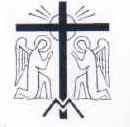|
Athanasius Schneider
Athanasius Schneider, ORC (born Anton Schneider on 7 April 1961) is a Catholic prelate, serving as the Auxiliary Bishop of Astana in Kazakhstan. He is a member of the Canons Regular of the Holy Cross of Coimbra. He is known for championing the pre-Vatican II liturgical traditions and practices of the Church and for protesting certain current policies, including some associated with Pope Francis. Family and early life Anton Schneider was born in Tokmok, Kirghiz SSR, in the Soviet Union. According to Athanasius Schneider′s account, his parents were Black Sea Germans (ethnic German settlers who lived along the northern coast of the Black Sea in the Russian Empire), who at the end of World War II were evacuated to Berlin whence they were deported and exiled by the USSR regime to a labor camp in Krasnokamsk in the Ural Mountains. His family was closely involved with the underground church. Schneider's mother Maria was one of several women to shelter the Blessed Oleksa Zaryckyj, ... [...More Info...] [...Related Items...] OR: [Wikipedia] [Google] [Baidu] |
Canons Regular Of The Holy Cross Of Coimbra
The Canons Regular of the Holy Cross of Coimbra are a Catholic religious order of canons regular founded in Portugal in the 12th century. The follows the Rule of Saint Augustine. History The Canons Regular of the Holy Cross of Coimbra were founded by St. Theotonius, Archdeacon Dom Tello, and Dom Juan Peculiar in 1131. Construction of its first monastery began on June 28, 1131. On Ash Wednesday, February 24, 1132, the original twelve, along with sixty others who had joined them, made their profession of vows and received the habit. That same day Theotonius was elected Superior. They adopted the customs of the Canons Regular of St. Ruf and in addition to the choral office undertook the pastoral care of neighboring parishes. Under Theotonius, the community flourished, and other houses were added. Hospices at Coimbra and Penela served numerous migrants and travelers. The order enjoyed widespread support, and received privileges and royal patronage. Their success however stirred up co ... [...More Info...] [...Related Items...] OR: [Wikipedia] [Google] [Baidu] |

